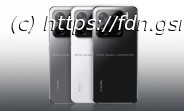Is the milk sold today similar to the milk available 100 years ago? Here, drink this and give me your results. Also, physicists achieve superconductivity at a temperature slightly higher than 0 degrees Kelvin and slightly lower than 2 degrees Kelvin. The Event Horizon Telescope project released a glamorous new portrait of Sagittarius A*, while a separate group of physicists reported on a pair of black hole pals.
Is the milk sold today similar to the milk available 100 years ago? Here, drink this and give me your results. Also, physicists achieve superconductivity at a temperature slightly higher than 0 degrees Kelvin and slightly lower than 2 degrees Kelvin. The Event Horizon Telescope project released a glamorous new portrait of Sagittarius A*, while a separate group of physicists reported on a pair of black hole pals.
Superconductivity, like Red Bull Pear Cinnamon Winter Edition, is only possible when the temperature drops to a significant degree. That’s 0 degrees Kelvin, or -273 degrees Celsius. So unlike your computer, which is probably cooled by a fan, quantum computers have to be chilled with an elaborate cooling apparatus so that whatever particles you’re using for qubits can be coherent.
Australian researchers now report that a particular kind of qubit based on the spin of individual electrons can maintain quantum coherence at a balmy 1 degree Kelvin, a temperature that would cook a Bose-Einstein condensate like a bowl of oatmeal in a microwave.
A multi-institutional collaboration has potentially identified a mysterious, periodic burst of light in a distant galaxy as a small black hole orbiting a larger black hole, punching right through its accretion disk every 8.
Home
United States
USA — IT Saturday Citations: 100-year-old milk, hot qubits and another banger from the Event...






